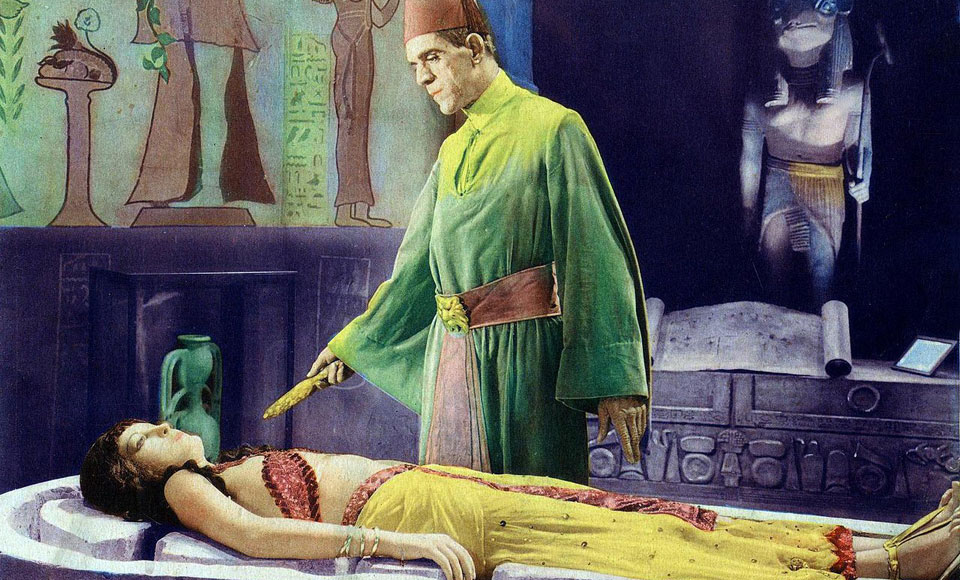
You don’t have to be a horror fan to enjoy Thomas Hamilton’s documentary Boris Karloff: The Man Behind the Monster (I’m not and I did). The 90-minute nonfiction biopic has all of the conventional hallmarks of a well-made movie history doc. Of course, there are copious clips ranging from Karloff’s classics, including in the role the British actor was best known for, as Frankenstein’s monster in various versions of the film franchise adapting the character from Mary Wollstonecraft Shelley’s chilling 1818 novel, starting in 1931. There are scenes from Karloff’s other famous films, including The Mummy, The Old Dark House, and The Mask of Fu Manchu, plus glimpses from more obscure flicks, including from his silent screen days. His many subsequent TV outings, wherein he often good-naturedly mocked his monstrous persona, are also covered.
In tried-and-true documentary style, these vignettes are intercut with original interviews with relatives who add intimate insights, plus filmmakers who worked with and were influenced by Boris. They include the star’s daughter, Sarah Karloff, plus Peter Bogdanovich, Guillermo del Toro, Christopher Plummer, John Landis, Roger Corman, and film historian Kevin Brownlow. Cineastes may find the appearance of Jack Pierce, Karloff’s longtime makeup man and the collaborator who added an essential ingredient to the actor’s look, presence, and success, to be the most interesting spot, although it’s all too brief.
In relating Karloff’s background, the film reveals a gem, although not very clearly. While Boris was born 1887 in London, his parentage was a mixture of British and Indian, so that Karloff was actually a mixed-race person, although the public was not explicitly made aware of this (like Merle Oberon of 1939’s Wuthering Heights, by the way). This is also all too briefly mentioned, and then the doc moves on. But Boris Karloff: The Man Behind the Monster’s commentators should have included an expert activist, author, academic, et al., to analyze and delve into this fascinating, presumably hitherto unknown or little known detail. Why was a not-quite-white actor cast to play all those monsters? Was this a form of typecasting and stereotyping? Was it a form of social commentary about racism, using “monsters” as metaphors for the “other,” persecuted by mainstream society (you know, all those villagers with pitchforks and torches)? Inquiring—and analytical—minds want to know.
Thomas Hamilton previously made three films about Leslie Howard and revealed the English actor’s Jewish heritage and how that inspired the Gone with the Wind co-star to become an anti-fascist. Alas, Boris Karloff: The Man Behind the Monster opens this Pandora’s box about its protagonist’s ancestry but then does not go into it, the way that, say, movie historian Eddie Muller insightfully relates Film Noir to the Hollywood Blacklist, McCarthyism, politics and more. This would have elevated this documentary, especially in this period of racial reckoning. (However, to Hamilton and co-writer Ron MacCloskey’s credit, the doc does treat Boris’s early activism with the Screen Actors Guild to protect actors’ rights.)
Boris Karloff: The Man Behind the Monster is entertaining but not especially enlightening. Fans will likely have a monstrously grand time watching this slice of cinema history.
Fun fact of the review: Bobby “Boris” Pickett’s 1962 novelty song “Monster Mash,” wherein Pickett imitated Karloff’s voice, is mentioned but not heard or seen onscreen in Boris Karloff: The Man Behind the Monster, presumably because of copyright and/or cost considerations regarding that popular “graveyard smash.”
Boris Karloff: The Man Behind the Monster opened in theaters September 17. For details about the film see here. Click here to watch the trailer.










